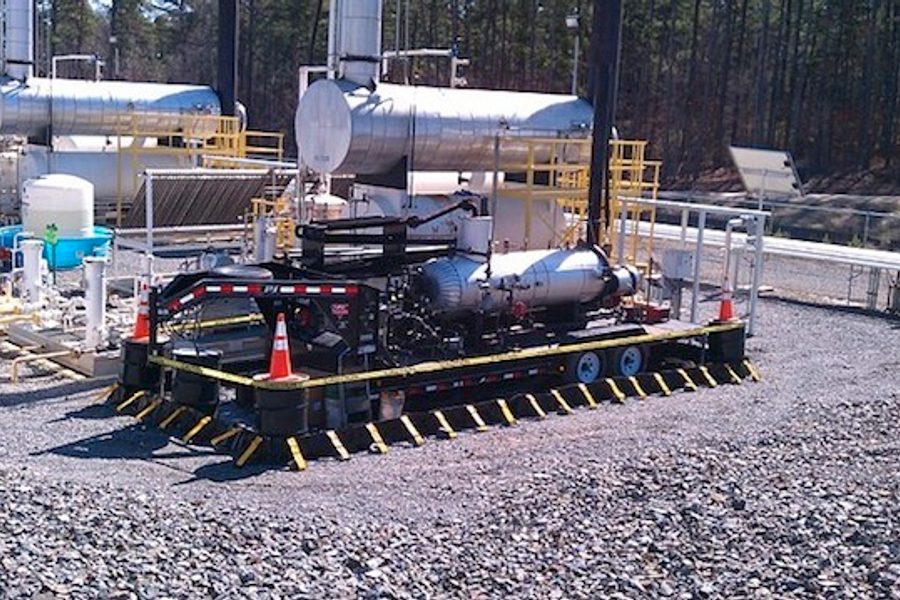
A recent story in The New York Times documented the spike in serious injuries and health problems in North Dakota “oil patch” boom towns, where hydraulic fracturing (fracking) for oil and natural gas has caused a rapid influx of workers.
Times reporter John Eligon writes:
The patients come with burns from hot water, with hands and fingers crushed by steel tongs, with injuries from chains that have whipsawed them off their feet. Ambulances carry mangled, bloodied bodies from accidents on roads packed with trucks and heavy-footed drivers.
Along with such injuries, workers also suffer from illnesses and physical and emotional problems related to the work and lifestyle, such as the impacts from working outside in freezing weather, emotional isolation, poor nutrition, drug use, heavy drinking and epidemics of sexually transmitted diseases that are all common among transient workers. Women in boom towns — both long-time residents and new workers — also report the greatly heightened threat of rape, sexual assault and domestic violence.
And none of this takes into account the widely reported potential of adverse health effects for workers and local residents face from the toxins related to oil and gas extraction — from the unknown chemicals used in fracking fluid to the possibility of methane in drinking water to the diesel emissions from heavy equipment. Pennsylvania last year passed a “gag rule” allowing physicians access to information about otherwise-secret chemicals used in fracking, but they can’t share the information with patients or even other physicians.
Even as recent booms in “unconventional” oil and gas deposits from Pennsylvania’s Marcellus Shale to North Dakota’s Bakken Shale have created great wealth for fossil fuel companies, land speculators and equipment suppliers, the Times notes that a disproportionate number of the workers lack health insurance. That means local hospitals and government providers wrack up massive debts because of uncompensated treatment. The Times details one hospital that saw its ambulance visits increase four-fold and its debt increase 2,000 percent to $1.2 million over the past five years.
As the health care situation shows, municipal budgets and administrations often can’t keep up with the sudden influx of residents needing services and infrastructure – an influx that can disappear almost overnight if the gas or oil deposit is suddenly deemed uneconomical based on constantly shifting market factors. (National Public Radio documented the social and economic impacts of this phenomenon in its multi-media project “Boomtown.”)
Shale oil and gas extraction is a highly transitory and speculative industry in which companies rarely make long-term commitments to either field employees or the communities where they locate. Workers are usually hired on contracts, paid high wages but often without benefits. Boom towns drive up the wages of even service industry jobs like fast food, ironically creating competition for hospitals trying to hire lower-level staff, according to the Times. While $20-an-hour wages for unskilled service jobs might seem a blessing for rural areas, the boom town effect also means that the cost of living and of rent skyrockets disproportionately. (Another recent New York Times story noted people becoming homeless after migrating to Wyoming for oil industry jobs.)
The U.S. Chamber of Commerce’s Institute for 21st Century Energy is in the process of a sweeping three-part study cataloguing the job and economic impacts of shale oil and gas extraction across the country. The first two parts, released in October and December, said the industries have already accounted for 1.75 million jobs nationally and will create 3.5 million jobs by 2035. Running a data model developed by the Department of Agriculture and widely used by various industries, the Chamber catalogued the direct, indirect and induced jobs created by unconventional shale oil and gas extraction and exploration. Indirect jobs include suppliers and services directly linked to the industry, while induced jobs are created by the influx of people and money into a community — covering everything from restaurants and grocery stores to exotic dancing to the arts…and health care.
The Chamber study said fracking for oil and gas has, for example, has already created more than 2,000 health care jobs in Illinois, even though exploration for shale gas is still in the relatively early stages and it’s not clear it will ever take off commercially. The study says that almost 4,000 ambulatory health care and hospital jobs have already been created in North Dakota by unconventional oil and gas, part of a grand total of more than 71,000 jobs created by fracking statewide — a particularly striking amount since the whole state population is only 700,000. In Louisiana, the study says, more than 2,000 healthcare jobs have already been created by unconventional oil and gas and more than 4,000 will be created by 2035.
An unrelated Illinois State University study using the same model predicts that just the exploratory stages of fracking in Illinois could create up to 47,000 jobs, with “private hospitals” and “health practitioners” being among the categories of high job creation.
It is unclear how closely the health care job predictions are tailored to the demographics of the new workers attracted by oil and gas and/or the high injury rates of these jobs. But it’s hard not to see irony in the fact that industry backers are touting the job creation benefits in the health care field even while this means injury and illness for workers, debt and stress for local hospitals, and possibly a lasting impact on the health of and health care services available to local residents long after the job boom has faded away.
Kari Lydersen is a Chicago-based journalist, author and assistant professor at Northwestern University, where she leads the investigative specialization at the Medill School of Journalism, Media, Integrated Marketing Communications. Her books include Mayor 1%: Rahm Emanuel and the Rise of Chicago’s 99%.







